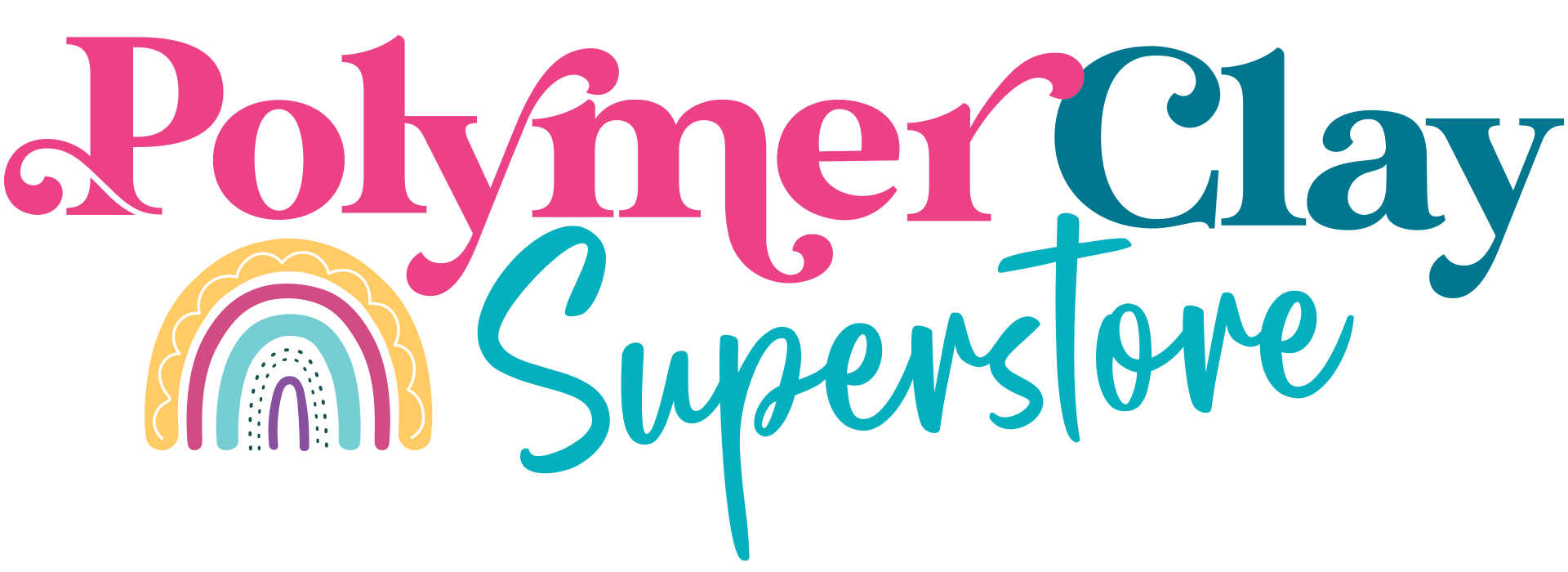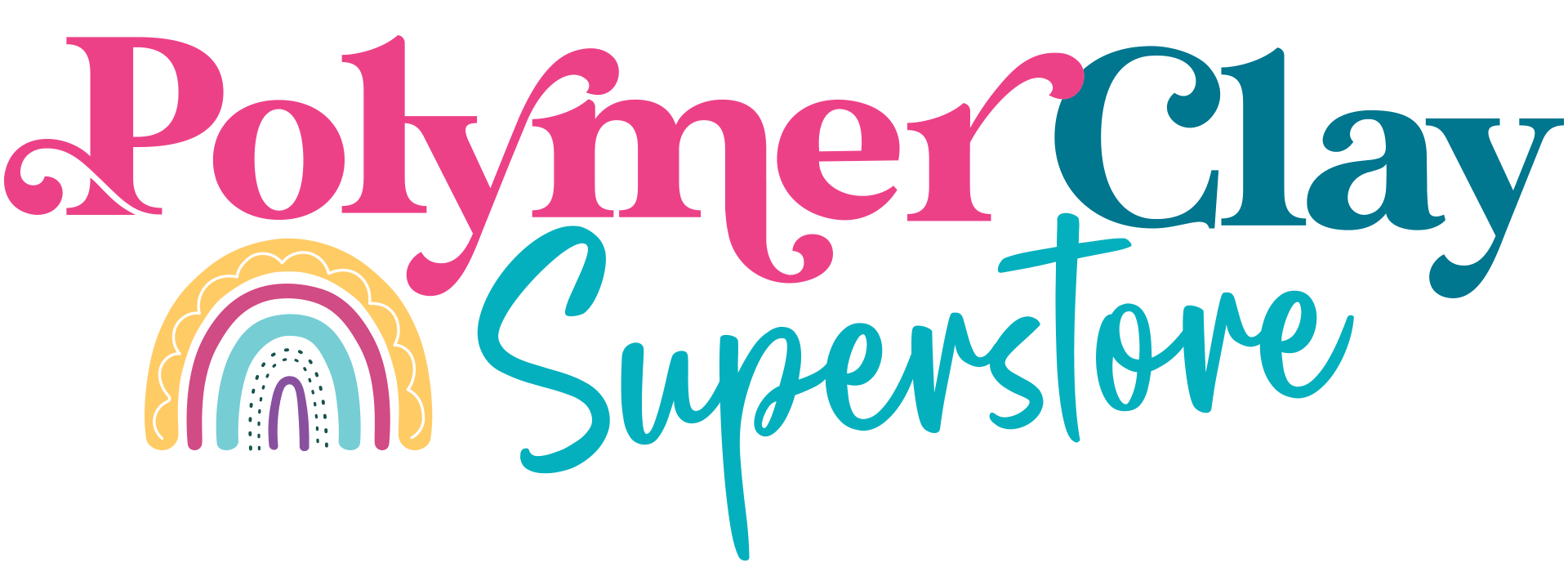What can I do with Polymer Clay?
What cautions should I take when working with clay?
How should Polymer Clay be stored?
What does a pasta machine have to do with clay?
What is Polymer Clay?
Polymer Clay (sometimes accidentally spelled polimer clay) is an art medium that is known for its versatility, pliability and simplicity to work with. It is an oven bake modeling material composed of polymers, resins, coloring agents and fillers. Not a natural clay, it is man-made from a plastic, polyvinyl chloride (PVC) base.
Polymer clay is used by artists and hobbyists ranging from children to professional artists and movie makers. It stays continually soft and can be baked in a home oven, retaining its color and size. It is available in many colors, including metallics, glow-in-the-dark and "stone." It can be used to simulate many materials: stone, semi-precious stones, porcelain, wood, and glass.
What can I do with Polymer Clay?
Polymer clay can be used in an assortment of crafts, including jewelry, home decoration, pottery, scrapbooking and sculpture. Techniques for working with the clay are borrowed from glass-making, metal-working, ceramics, sculpture and textile.
Clay can be used to cover anything that won't burn during firing, such as wood, frames, pens, and mirrors. To create your own colors, polymer clay can be formulated like paint, or colored with powders, chalk, ink, glitter, colored pencils, powdered makeup and paint. After baking, polymer clay can be sanded, buffed, glazed, or painted. You are limited only by your imagination, and even then, there are plenty of projects and ideas from others to choose from!
Can I mix clays?
Absolutely! Mixing clays heightens your project's potential. Clays can be mixed to customize, color, weight, or stability. You can use Premo as a strong backing or UltraLight for less weight within your other clays. Glow-In-The-Dark clay can be mixed with light colors of Sculpey III for a ghostly glow.
What cautions should I take when working with clay?
Casual clay hobbyists can safely bake the clay in their home ovens, taking care to properly ventilate. If you are baking frequently, some artists like to use a toaster oven. Clay should not be used with anything that will prepare or touch food. Cookie sheets can be lined with foil or cardstock/index cards during baking.
If you use kitchen items or toys as clay tools, be sure that these do not return to food preparation use. Washing your hands frequently and before eating is a good precaution to take. Small children should be supervised-while polymer clay is certified as nontoxic, it should not be ingested. If you have concerns about the release of fumes during baking, you can bake clay in a sealed bag, like the Reynolds baking bags, or after baking, wash the inside of the oven with baking soda and water. Always supervise children with baking.
How should Polymer Clay be stored?
Polymer Clay should be stored in its original packaging and away from heat and sunlight. Do not leave the clay in your vehicle on a hot day or it may bake. Once the packaging has been opened, it is best to store it wrapped in wax paper in an airtight container. Do not store it in Tupperware or other food storage containers that you plan to use for food in the future. A recommended place for storing clay between use is in the refrigerator or freezer, dry and away from light.
What is "conditioning"?
Conditioning is simply the process of warming and kneading the clay in preparation for use. This increases the clay's pliability and reduces risk of breakage. The Sculpey clays can be conditioned easily and in a very short period of time by kneading and stretching. Some of the stronger, stiffer clays can be conditioned with the help of a pasta machine. Cut the clay into chunks and feed through the machine several times.
How do I bake Polymer Clay?
The clays vary in baking time, so you should always follow the package directions. Preheat your oven and bake clay on foil, index cards or a ceramic tile. After baking, allow clay to cool and fully cure before handling it. If a shine is desired, when the clay has cooled, sand it with wet-dry sandpaper under running water, then buff it with a clean soft cloth. Glaze or water-based acrylic paints may be applied after baking.
For more detailed information, see How to Bake Sculpey Clay.
Can I paint polymer clay?
Any of the clays can be painted, water-based acrylics applied in several, thin layers are recommended. Any paint can be used if you seal it with several layers of Sculpey glaze.
What does a Pasta Machine have to do with clay?
Pasta machines are used for conditioning, rolling and blending clay. They can ease conditioning for stiff clay or tired hands, will aide in rolling out layers of uniform thickness, and are essential for making the beautiful Skinner blends.
What do I need to begin?
See this page for our recommended products to get started with polymer clay, or take advantage of this Special Offer for 20% off a Beginner's Starter Kit.
All you really need is your imagination! Clay art can be made with just your hands!
You will also want some basic tools. Start with a clean, smooth, cool work surface. Marble, glass, and ceramic tile are great work surfaces. Many people like to use something that can clay can be baked on, to minimize disruption to the clay before baking. Cardstock and index cards can be used for this purpose also. Wax paper or parchment paper can also be used.
A rolling pin, cutting blade, and shaping tools will get you off to a great start. Some tools you may already have at home and some you will want to buy.
A pin can be used for some detailing work and a slicing blade, like the Sculpey Super Slicers will be a good length for caning work. A skewer or large pin can be used for piercing to make holes for stringing projects.
For more fun and experience with the clay, you'll want to invest in a pasta machine, measuring tools, knives, carving and sculpting tools, shape cutters, drills, sandpaper, a clay extruder, and push-molds.







